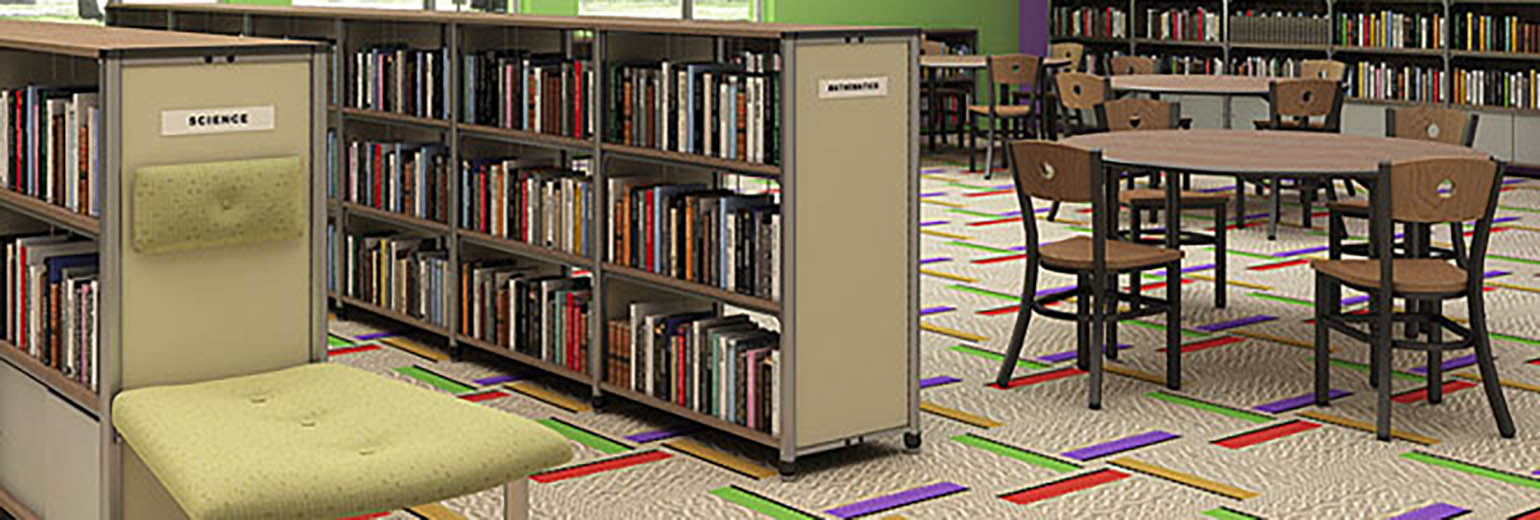With the Internet now just a finger swipe away, students and teachers no longer need a library to access critical information. But that doesn’t mean school libraries have become irrelevant.
On the contrary, school libraries are transforming from archives of information into vibrant “learning commons,” where students gather to learn key digital-age skills and construct new knowledge together.
As you redesign your own school libraries to meet new 21st-century needs, here are some ideas to help inspire you.
A ‘think tank’ for solving key challenges
At Swan Valley High School in Saginaw, Mich., “our library is the hub of the school,” writes Library Media Specialist Kay Wejrowski. “Each year, our library morphs itself into what the school needs.”
Wejrowski and her aides help teachers plan lessons using probing questions that get students to think more deeply. Library lessons for all incoming freshmen lay the groundwork for their success in high school, teaching them about the resources that are available, how to be safe online, and how to create a digital footprint they can be proud of.
The school has turned part of its library into a maker space, and students also use the facility to videoconference with authors, Holocaust survivors, and people from other parts of the world. Each spring, library staff help students research their senior projects and give constructive feedback on students’ presentations.
When the Swan Valley School District cut funding to take preschoolers to the public library, the high school created an early childhood center in its library, with teens developing and teaching weekly reading lessons for these children. When the school went 1:1 with tablets for all students, a library workroom was converted into a technology troubleshooting and repair station.
In short, it is the school’s library—which earned the 2013 Library Program of the Year award from the American Association of School Librarians—that “often serves as a think tank for evolving ideas and programs and finds solutions to local challenges,” Wejrowski notes.
A ‘barrier-free space’ for learning and innovation
When Westlake High School in Austin, Texas, redesigned its library, Librarian Carolyn Foote saw this as an opportunity to think beyond the traditional confines.
“I knew that I wanted the library to be a campfire space where students could gather, a collaborative space where they could work together in small groups, a transparent space where learning in the school could be ‘seen’ through the windows, a more barrier-free space in terms of student use, and an innovative space where the design would reflect the innovations that are going on inside our campus,” she writes.
To achieve these goals, the Westlake library includes glass walls, an outdoor courtyard area, and a “juice bar” that encourages students and teachers to come together, communicate, and share in the learning process.
Foote took inspiration from how other public spaces were designed to be both comfortable and attractive. She hoped for a place where students would want to gather and hang out as they learned or studied together. So, she paid attention to small details such as the lighting fixtures, seating options, and colors in her own library’s design.
Her advice for other K-12 leaders as they redesign their library spaces? “Watch how students are using your current space. Watch what is giving them problems or causing confusion. Watch what their preferences are. Try to identify those key things about the space that do—or do not—work for your customers.”
Moving from a ‘transactional’ to a ‘transformational’ space
In transforming the library at Pomperaug Elementary School in Southbury, Conn., Media Specialist Jane Martellino began by changing the way she taught information literacy skills to students.
“The focus should be … on the shift libraries must make from transactional to transformational. I believe this shift occurs first in mindset, and then the physical transformation of the library space follows,” she notes.
“By changing both the way I taught, as well as the expectations forstudent learning, the results were obvious. Students were collaborating, creating, communicating, and dropping in any time they had moments to spare. In no time at all, mindset shifted.” However, changes to the physical space had to be made incrementally, owing to budget constraints.
Martellino began by making simple changes, such as cleaning out her librarian’s office and transforming it into a “green screen” room and recording studio. She also enlisted the help of custodians to move furniture in order to create larger spaces for specific learning needs as they arose.
Her vision going forward includes more flexible, agile furniture that can be moved easily without the help of custodians; portable dividers with writeable surfaces, such as Plexiglas walls on wheels; comfortable seating with built-in electrical outlets to welcome students and teachers to gather informally and chat; and collaboration centers where students can connect their mobile devices to flat screens for group collaboration or Skyping with experts.
For more advice on redesigning school libraries to meet emerging 21st-century needs, contact Arizona Furnishings today at 800.872.2287.
– Cindy Eggebrecht


